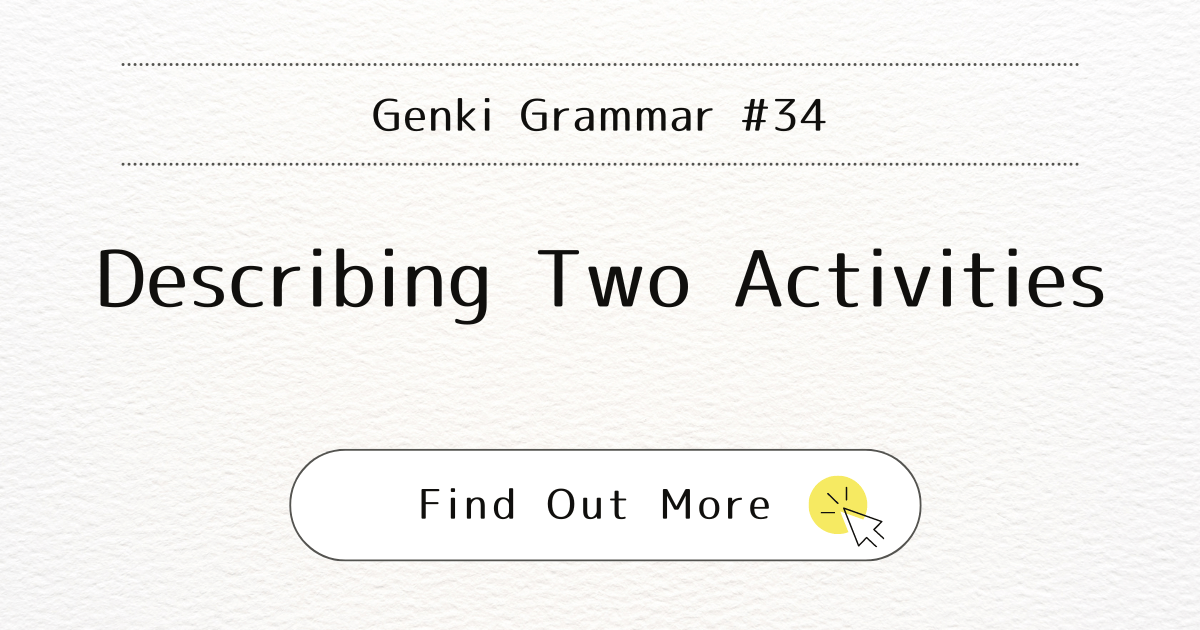
Introduction
In this post, we will learn how to use the te-form of verbs to describe two or more activities in Japanese. This allows you to express a sequence of events or actions, making your sentences more detailed.
What It Means
The te-form is used to connect verbs in Japanese, acting like the word “and” in English. You can describe a sequence of activities by using the te-form of verbs. Unlike nouns, verbs cannot be connected using と (to). The tense of the final verb in the sentence determines when the events take place.
When You Use It
Use the te-form to connect multiple verbs and describe a series of actions. This is useful when you want to tell a story or explain what you did or will do in a sequence.
Examples
図書館に行って、本を借ります。(Toshokan ni itte, hon o karimasu.) – I will go to the library and check out some books.
今日は、5時に起きて、勉強しました。(Kyou wa, goji ni okite, benkyou shimashita.) – Today I got up at five and studied.
食堂に行って、昼ご飯を食べましょう。(Shokudou ni itte, hirugohan o tabemashou.) – Let’s go to the cafeteria and have lunch.
Note
The te-form can also connect a verb more loosely with the rest of the sentence. The actions don’t have to be in sequence; instead, they describe how or why the main action happens. For example:
- 電車に乗って、学校へ行きます。(Densha ni notte, gakkou e ikimasu.) – I go to school by train.
- The te-form verb (乗って, notte) describes the manner (how / by train) in which the main action (going to school) happens.
- 宿題を忘れて、すみません。(Shukudai o wasurete, sumimasen.) – I am sorry for not bringing in my homework.
- The te-form verb (忘れて, wasurete) explains the context (why / forgetting homework) for the main action (apologizing).
Conclusion
Using the te-form to connect verbs allows you to describe multiple activities in a single sentence, making your Japanese more natural and expressive.



